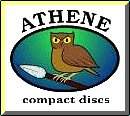This is an important disc and it has to be said at once that Raymond Clarke
is a staggering pianist of exceptional gifts. In case it is not obvious to
any listener to the performances, Szymanowski's music is incredibly difficult
both technically and interpretatively. There are so many notes, huge chords
and constant changes of mood and tempo.
In fact, this is my major reservation about the disc. The music is so intense
that it is exhausting. It becomes wearisome. There are moments of great
excitement and, occasionally, calm but it is so devoid of effective contrast.
It is often formless and lacking in direction and purpose and I feel sure
the composer had this in mind since each of the sonatas ends with a fugue
which musical form, or device, is very predictable, restrictive and can be
academically stuffy. The composer, seeing his loose episodic meanderings,
then embarks on the 'respectability' of a fugue as if he wants to be accepted
as a composer in direct line from Bach. The piano at Nottingham University
is 'tubby' at times and 'suspect' in other ways.
The other reservation may not be the pianist's fault either but the range
of tone from pppp to ffff is not made and so
contrast is lost and the composer's instructions are not realised. For example,
in the Sonata No 2, bar 70 is marked p, bar 73
mp and bar 75, pp. It is not really that evident
in this recording; bar 97 is marked fff and con
fuoco, bars 122 and 125 are marked pp and so on. The
Sonata No 3 begins ppp but it isn't and so when we reach
the first fff at bar 114 the eight degrees of increased range is not realised.
The pppp velocissimo at bar 210 and 214 should sound
as an inaudible whisper, but it does not. However, other recordings do not
follow all the dynamics either and Szymanowski's instructions are excessive.
I accept that Clarke has so many notes and other major technical difficulties
to contend with, which he does remarkably well (there seemed to be a few
nasty moments in the curious A major Fugue of the Sonata No 2), that
all the variations of tone may be the least of his problems. The piano has
a couple of 'bad' notes in the octave upwards from middle C.
It is incredible to believe that the Sonata No 1 won a Chopin prize
in 1910. Perhaps this is because of the obvious influences of Chopin particularly
his own first sonata and the Etude in E flat Op 10 No 11. What adds
to the tedium of Szymanowski's Sonata No 1 is that the first three
movements are all exclusively in ¾ time. There is no variation of time
signature. The finale figure is in common time. The third movement Tempo
di minuetto has big chords played as arpeggios which makes it sound like
a musical box and something quite puerile albeit attractive. All the themes
of this sonata are hardly memorable and the flabby structures are contrasted
by the dominant 'correctness' of the subsequent fugue.
Like Chopin's first sonata, also in C minor, Szymanowski's is an essay in
which the various constituent points are not made coherently or with any
semblance of order. At least, the Chopin has a gorgeous slow movement.
I find it almost as incredible that no less a pianist than Arthur Rubinstein
gave the premiere of the Sonata No 2 in Warsaw in 1911. It begins
with a frequent Szymanowski rising theme. Here it is B, C#, D, F, G#, B.
This is a two movement work; an allegro assai and a there and variations
ending with a fugue and with a sarabande and minuet thrown
in thus showing again the composer looking over his shoulder either as a
mark of respect to older composers or displaying his lack of personal security.
That the music is elaborate rather defeats it. It is so dense in texture
that is rather tiring. The second movement is not a unified whole and, again,
none of the themes are memorable. There is, however, a successful allegretto
scherzando section, mainly in B flat.
The Sonata No 3 dates from 1917 and is marginally the best of the
three. It is not so overwhelmingly exhausting but it is tonally unstable.
The one continuous movement is really four sections but the boundaries are
not crystal clear. The fugue is the best of the three but, as with
all three sonatas we are left with having heard three massive essays of moody,
intense, perhaps psychological music that some may find claustrophobic.
The Prelude and Fugue in C sharp minor is slight.
I believe the only other available recordings of the sonatas is Martin Jones'
six CD set for Nimbus. The sonatas in his set do not follow the dynamics
and there are many wrong notes, missing notes and one gets the impression
that Nimbus put pressure on Martin Jones to record them without giving him
time to know the pieces. The Nimbus set is poor. If you want the Szymanowski
sonatas you have no choice but Clarke's performances.
Raymond Clarke's performances are almost breathtaking and this is an important
and welcome disc. There will be many who find it quite irresistible.
Raymond Clarke has recently suffered a bad accident and we wish him a full
and lasting recovery.
Reviewer
David Wright
Performances

Recording

|
Visit
Athene
|
|
 |
